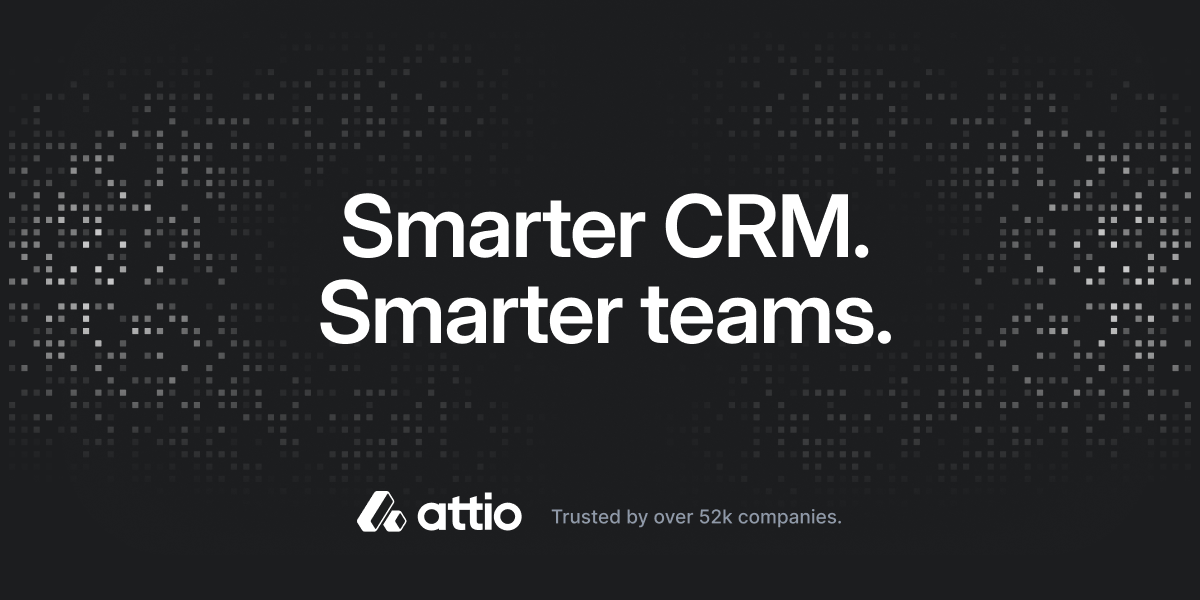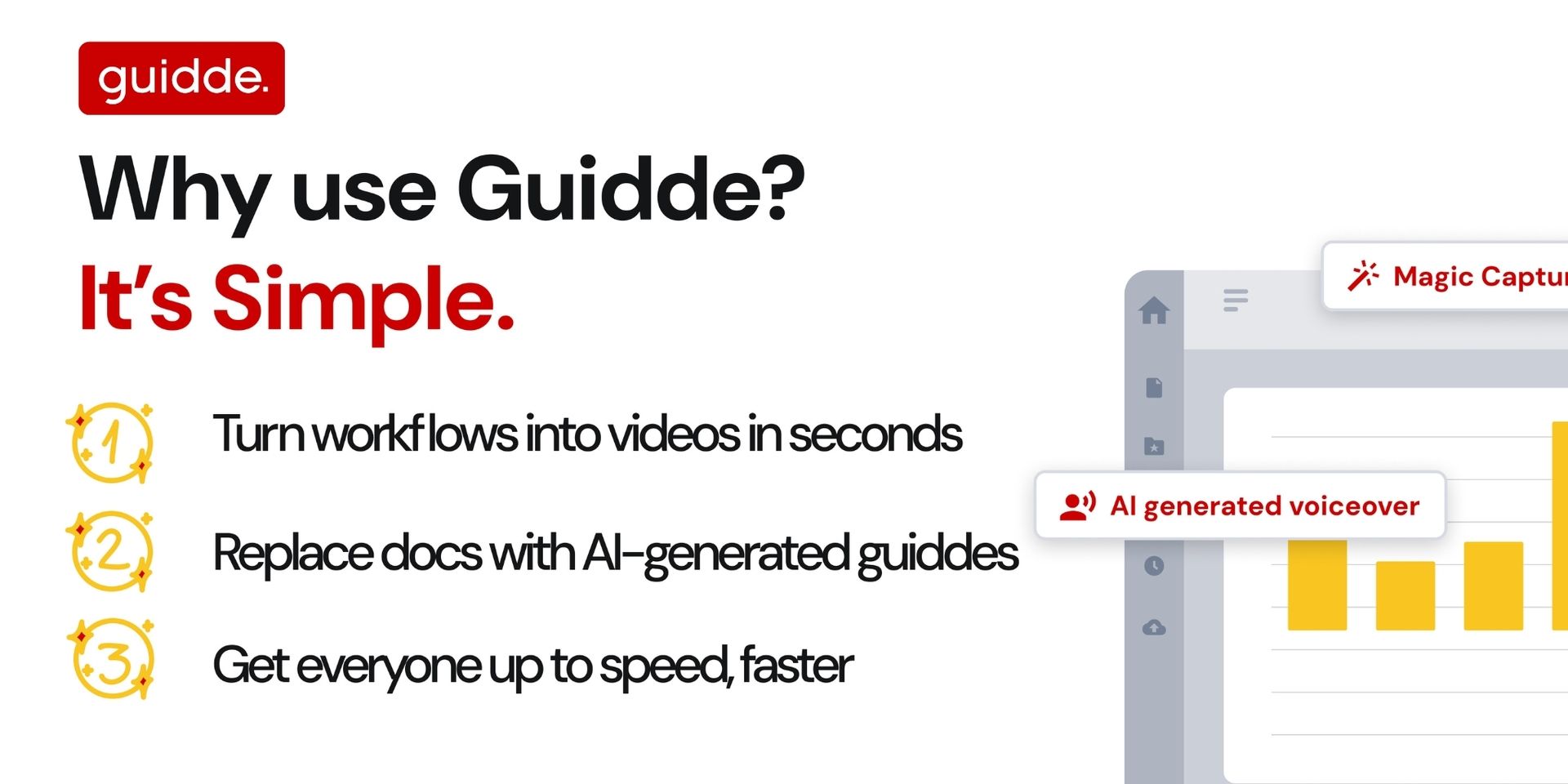8 bits for a Byte: This Week’s Byte: Most Clicked, Most Loved
You clicked. We listened. This special edition of AI Quick Bytes curates the most popular, most-clicked insights from the past year of issues—your signal through the noise. From the strategy playbooks execs keep forwarding, to frameworks shaping org-wide adoption plans, to that one quote about data-for-humanity that lit up LinkedIn—these are the articles you couldn’t get enough of. We’ve also resurfaced a fan-favorite video and one of my favorite Sunday cartoons.
If you're catching up—or doubling down—this roundup is your shortcut to what resonated most with leaders like you.

Introducing the first AI-native CRM
Connect your email, and you’ll instantly get a CRM with enriched customer insights and a platform that grows with your business.
With AI at the core, Attio lets you:
Prospect and route leads with research agents
Get real-time insights during customer calls
Build powerful automations for your complex workflows
Join industry leaders like Granola, Taskrabbit, Flatfile and more.

Let’s Get To It!
Bit 1: Our Most Popular YouTube Video


Quote of the Week:
Bit 2: The next five years will usher in a whirlwind of transformation—both exhilarating and daunting—as artificial intelligence reshapes the landscape of human potential. The progress we stand to achieve will far outshine its challenges, provided we seize this moment with foresight and courage.
Now, more than ever, the democratization of data emerges as a moral imperative—a tool for the empowerment of all humanity, not merely the privileged few. This data, stripped of personal identifiers to protect privacy, must transcend its role as a corporate commodity and become a shared resource for the collective good.
In a world where 'data is the new oil,' the question is no longer who owns it, but how it can serve humanity’s higher aspirations. Let us ensure this digital wealth fuels the progress of all—not just those who exploited the shadows of an unregulated frontier.

If AI strategy feels like a maze, this is your map. Gartner nails it with one of the clearest, most actionable frameworks out there — showing exactly what it takes to turn AI from hype into enterprise impact. Think of it as your blueprint to unlock serious value, minus the guesswork. Big shoutout to Andreas Horn, Head of AIOps @ IBM for spotlighting this gem — it’s a must-read for any leader serious about scaling AI.
.
Executive Summary:
If you're serious about leading your company into an AI-powered future, this roadmap is your playbook. Building an AI strategy isn't about running a few pilot projects — it's about designing a fully integrated, scalable system that connects ambition with execution. From setting a clear north star to delivering measurable value, this framework walks you through every critical layer to transform your AI vision into enterprise-wide impact.
Three Key Takeaways:
Start with Strategic Clarity
Don’t chase shiny AI tools — define your drivers, goals, and vision first. A well-articulated strategy aligns teams, de-risks your investments, and ensures AI solves real business problems.Integrate AI Into the Business Core
AI can’t live in a silo. It must plug into existing business, IT, and data strategies to gain traction and executive backing. If it doesn’t fit your broader enterprise game plan, it won’t scale.Operationalize and Deliver at Scale
Governance, data pipelines, tech architecture, and AI fluency are your foundation. When done right, your AI portfolio delivers real, measurable value — not just proof-of-concepts collecting dust.
💥 Action Summary: Craft your AI strategy like a systems architect: align it to your core business goals, connect it across functions, and build the operating muscle to scale. Start by defining your "why," secure cross-functional buy-in, and turn ambition into action — because in this AI era, clarity is your competitive edge.

Revolutionize Learning with AI-Powered Video Guides
Upgrade your organization training with engaging, interactive video content powered by Guidde.
Here’s what you’ll love about it:
1️⃣ Fast & Simple Creation: AI transforms text into video in moments.
2️⃣ Easily Editable: Update videos as fast as your processes evolve.
3️⃣ Language-Ready: Reach every learner with guides in their native tongue.
Bring your training materials to life.
The best part? The browser extension is 100% free.

We’re past the point of “Should we use AI?” and deep into “How do we use it wisely?” This post curates six major frameworks for enterprise AI, from Microsoft to MIT to HBR. They all offer pathways—but more importantly, mindsets. Whether you prioritize augmentation, automation, or human-centered teaming, the key is choosing an approach that aligns with your business model and your leadership culture. Personally, I’m drawn to models that focus on collaboration over replacement—AI as a teammate, not a takeover artist.
Some frameworks climb toward autonomy; others double down on human-AI synergy.
"Human-in-the-loop" and "AI as collaborator" models keep ethics and creativity at the core.
Leaders need more than tech blueprints—they need AI philosophies.
ACTION BYTES: Use these models not as rules—but as starting points for your own AI credo. Steal like a strategist -mix and remix frameworks until one fits your DNA.



Bit 6: Sunday Funnies
One of my favorites !


This clear, high-impact overview of the modern AI stack offers a 10,000-foot perspective on how enterprise architecture is evolving to harness the full potential of AI. Discover the key layers, emerging trends, and game-changing opportunities shaping the future of technology today.
Executive Summary
The modern AI stack is undergoing a transformation, shifting from early experimentation to a structured framework that drives enterprise innovation. The new stack is built on four key layers—Compute & Foundation Models, Data, Deployment, and Observability—each enabling enterprises to harness AI's potential efficiently and securely. This evolution has redefined AI development, moving from labor-intensive ML pipelines to product-first approaches powered by advanced large language models (LLMs). As enterprises embrace this new paradigm, they unlock opportunities to innovate faster, reduce costs, and democratize AI capabilities across teams.
Key Takeaways
AI Maturity Redefined: From Model-First to Product-First
Traditional AI development required extensive expertise and resources to build custom models. Today, pre-trained LLMs enable teams to start with product-focused innovation, leveraging tools like OpenAI APIs to build applications rapidly. This shift democratizes AI, empowering mainstream developers to drive impactful solutions.
Core Infrastructure Layers Powering Innovation
The modern AI stack comprises four essential layers:
Compute & Foundation Models: Training, fine-tuning, and deploying powerful models.
Data: Tools like vector databases and ETL pipelines provide enterprise-specific context.
Deployment: Orchestrating AI applications with agent frameworks and prompt management.
Observability: Monitoring runtime behavior to ensure reliability and security.
These layers collectively form the backbone of enterprise AI systems, ensuring scalability and performance.
Key Trends Shaping the Future of AI
RAG Dominance: Retrieval-augmented generation leads in customizing LLMs with enterprise-specific knowledge, ensuring relevance and accuracy.
Proliferation of Small, Task-Specific Models: As enterprises seek cost-effective, domain-specific solutions, fine-tuned models are becoming pivotal.
Serverless Architectures: The shift to serverless computing optimizes costs and simplifies operations, paving the way for seamless scaling and innovation.
This dynamic ecosystem not only accelerates AI adoption but also redefines how enterprises innovate, ensuring AI-driven solutions remain accessible, efficient, and impactful.
Until next time, take it one bit at a time!
Rob
P.S. Thanks for making it to the end—because this is where the future reveals itself.
The Great AI KPI Experiment
We’re 10 years into enterprise AI... and still arguing about how to measure it. The Pragmatic Engineer shows how major tech firms are prototyping their way toward clarity — often with metrics that look more like experiments than standards.
AI metrics are all over the map — from user adoption to cost savings to “model influence.”
Many firms run A/B tests to infer AI value — sometimes with sketchy baselines.
Usage stats and subjective feedback are surprisingly common.
No gold standard exists; metric design is still mostly tribal.
Some firms still rely heavily on model-centric metrics, despite weak links to outcomes.
There’s a growing shift toward measuring downstream business impact, not just ML performance.
ACTION BYTE: Build AI KPIs as testable hypotheses — not gospel truths.
Join thousands of satisfied readers and get our expertly curated selection of top newsletters delivered to you. Subscribe now for free and never miss out on the best content across the web!









